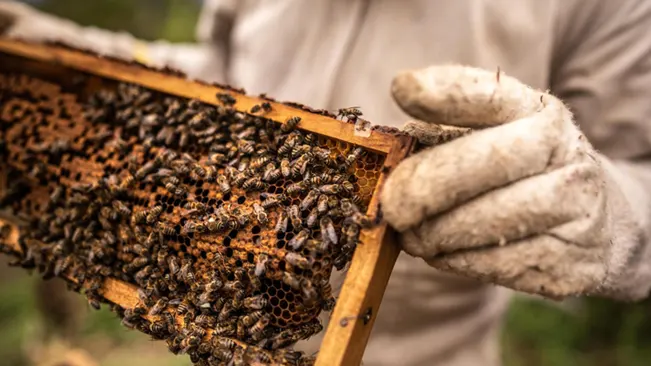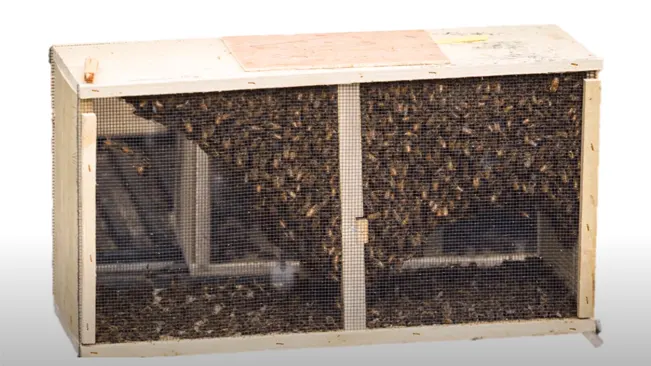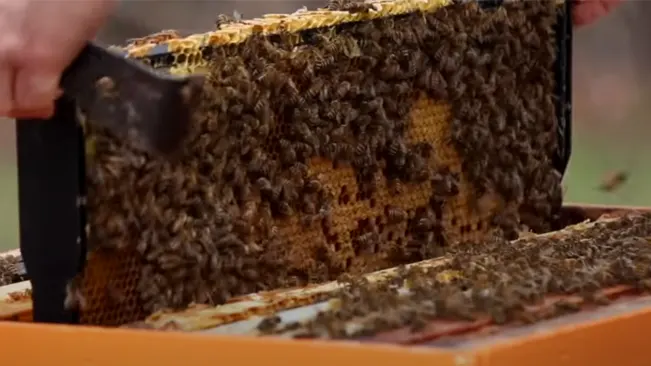How to Start a Beehive: Essential Tips for Aspiring Beekeepers
- February 5, 2024
- 1 comment
Embarking on the journey of beekeeping is a multifaceted adventure that intertwines the ancient art of nurturing bees with a modern commitment to ecological stewardship and sustainability. This practice opens a window to the intricate and fascinating world of honeybees, providing not only the tangible rewards of honey and hive-related products but also the intangible pleasure of connecting with nature on a profound level. Successful beekeeping hinges on thorough preparation and a foundational understanding of bee biology and ecology, underscoring the importance of education and hands-on experience.

Aspiring beekeepers must approach their role with humility and respect, recognizing that successful beekeeping is not about domination but about partnership with these extraordinary insects. By adhering to essential beekeeping tips and best practices, individuals can embark on a rewarding path that benefits both the bees and the broader environment, ensuring the vitality of bee populations and, by extension, the health of our planet.
1. Understand Bee Biology and Behavior
Before acquiring your first hive, it’s essential to immerse yourself in the study of bee biology, behavior, and social dynamics. Gaining insights into how bees communicate, forage, and organize within the hive is foundational for effective and empathetic beekeeping. Utilizing resources like books, courses, and insights from local beekeeping associations can significantly deepen your understanding, preparing you to manage your hive with greater awareness and sensitivity. This preparatory knowledge is not just about better hive management; it’s about fostering a harmonious relationship between you and your bees, enhancing both the health of the hive and your experience as a beekeeper.
2. Choose the Right Location
Choosing the right location for your beehive is key to ensuring your bees’ health and productivity. Aim for a spot that enjoys plenty of sunlight, is shielded from strong winds, and provides easy access to water and a variety of plants for foraging. It’s also crucial to keep the hive away from busy areas to minimize disturbances and to implement measures against predators. By carefully selecting a location that meets these criteria, you can create a conducive environment for your bees to thrive, contributing to their well-being and the success of your beekeeping endeavors.
3. Invest in Quality Equipment
Starting beekeeping with the right equipment is crucial for both the beekeeper’s success and the well-being of the bees. A well-constructed hive, such as a Langstroth, Top-Bar, or Warre, forms the heart of your beekeeping practice, each type suiting different approaches and philosophies. Personal protection through a high-quality bee suit and gloves is essential to ensure safety and comfort during hive management. Tools like a smoker, which calms the bees during inspections, and a hive tool for frame maintenance, are indispensable for effective hive management. Investing in durable, high-quality equipment not only protects the beekeeper but also supports the health and longevity of the bee colonies. The right gear facilitates a harmonious relationship with the bees, making beekeeping a rewarding and sustainable endeavor.
4. Decide Between Package Bees, Nucleus Colony, or Swarm
Starting a beehive involves selecting the initial bee population, with each option having distinct advantages and challenges:
Package Bees

Pros
- Package bees are accessible from many suppliers, allowing beekeepers to choose from various bee species and traits, catering to specific preferences or environmental conditions.
- Ideal for brand-new equipment, as they come without comb, minimizing the risk of transferring diseases or pests from previously used comb.
Cons
- Since package bees come without comb, they require more time to build their hive structure from scratch, delaying honey production and colony growth.
- Often more expensive due to shipping and handling, package bees can also experience stress during transport, potentially affecting their initial health and productivity.
Nucleus Colony

Pros
- Nucs provide a mini-colony with an established queen, workers, brood, and comb, ensuring a seamless transition and quicker colony establishment in the new hive.
- The existing queen and brood mean lower risk of queen rejection and a higher initial survival rate due to the established colony structure and pheromones.
Cons
- The inclusion of comb, brood, and an established queen makes nucs more expensive than package bees, reflecting the added value and labor involved in their preparation.
- Nucs are generally available only during specific times of the year, primarily in spring, which can limit flexibility in start-up timing.
Swarm

Pros
- Capturing a swarm is usually free, offering a significant cost advantage over purchasing bees, especially for those on a tight budget or looking to expand their apiary economically.
- Swarms, being natural occurrences, often result in robust and healthy colonies. The bees in a swarm have already demonstrated their survival skills and cohesion as a group.
Cons
- Successfully capturing a swarm demands readiness, experience, and sometimes luck. It’s not a reliable method for those who need bees at a specific time or are new to beekeeping.
- Swarms can come from unknown sources, carrying the risk of inheriting aggressive traits or diseases. There’s also no guarantee of the swarm’s age or the queen’s remaining lifespan.
5. Learn Hive Management Basics
Effective hive management is crucial for maintaining a healthy bee colony, involving regular checks on the queen’s health, signs of pests like Varroa mites, and diseases such as American foulbrood or colony collapse disorder. Identifying these issues early is key to managing them promptly, using appropriate methods to mitigate their impact. This not only ensures the well-being of the bees but also safeguards their vital role in pollination. Keeping a vigilant eye on these factors and being prepared to take action can help sustain a thriving bee population and contribute positively to the environment.
6. Understand the Importance of Bee Space
The principle of ‘bee space,’ pioneered by Lorenzo Langstroth, is a cornerstone of modern beekeeping, shaping how hives are designed. This precise 3/8 inch gap, tailored to the bees’ natural behavior, prevents them from filling unnecessary spaces with comb or propolis, thereby ensuring that hive components can be easily accessed and managed. This concept not only streamlines hive inspections and maintenance but also supports the well-being of the colony by aligning with their instinctual space preferences. By incorporating bee space into hive construction, beekeepers can foster more manageable and orderly hives, significantly enhancing the efficiency of beekeeping practices and the health of bee populations.
7. Consider Going Foundationless
Lorenzo Langstroth’s discovery of ‘bee space,’ a critical 3/8 inch gap within hive structures, marked a pivotal moment in beekeeping, transforming hive design and bee colony management. This ingeniously calculated spacing allows bees to move freely without instinctively filling gaps with comb or propolis, thereby preventing the frames and hive components from becoming glued together. This innovation facilitates easier hive inspections, management, and harvesting, reducing stress for both bees and beekeepers. The principle of bee space highlights the importance of aligning hive design with the natural behaviors and biological needs of bees, creating environments that are not only livable but also easily manageable. This approach has led to healthier bee populations and more sustainable beekeeping methods, emphasizing the deep connection between bee welfare and beekeeping success.
8. Practice Sustainable Beekeeping
Sustainable beekeeping is vital for the health of bee colonies and the environment. It involves reducing chemical use, providing a variety of plants for forage, and allowing bees to retain more of their honey. These practices ensure bees have a natural, healthy environment, supporting their immunity and reducing reliance on artificial interventions. Sustainable methods not only benefit the bees by promoting stronger, more resilient colonies but also contribute to ecological balance, highlighting the interconnectedness of beekeeping with broader environmental health.
9. Join a Beekeeping Community
Joining a beekeeping community, whether through local clubs, online forums, or educational courses, offers invaluable support and camaraderie to beekeepers of all levels. Such connections provide a wealth of shared knowledge, practical advice, and moral support, making the challenges of beekeeping more manageable and the experience more rewarding. Engaging with others in the field allows for the exchange of tips, solutions to common problems, and discussions on best practices, enriching your beekeeping journey with diverse perspectives and insights. This sense of community not only enhances your skills and confidence as a beekeeper but also fosters a collective commitment to the well-being of bees and the environment.
10. Be Patient and Observant
Beekeeping is deeply rooted in the art of observation and the patience to learn from the natural behavior of bees. Spending time observing your hive can teach you about the intricate workings and needs of your colony. In the crucial first year, as your bees settle into their new environment, adopting a patient approach is essential. This observational learning phase helps you attune to the subtle signals bees give about their health and well-being, enabling you to make more informed decisions. Such a mindful approach not only enhances your beekeeping skills but also fosters a stronger, more harmonious relationship with your colony, laying the foundation for long-term success.
Related Topic
- Starting Your Bee Farm: A Beginner’s Guide to Beekeeping Basics
- Why Are Bees Important? Examining Their Critical Role in Biodiversity and Crop Pollination
FAQs
- What is the best time of year to start a beehive?
The best time to start a beehive is in the spring when flowers begin to bloom, providing ample forage for your new colony. - How much space do I need for a beehive?
You don’t need a lot of space for a beehive; even a small backyard can suffice. However, ensure there’s enough space for the bees to fly in and out without disturbing neighbors or pedestrians. - Is beekeeping expensive?
Initial costs can be significant, considering the hive, bees, and protective gear. However, many beekeepers find the investment pays off in the enjoyment and hive products they receive. - How often should I inspect my hive?
During peak season, inspect your hive every 7-10 days. In colder months, inspections can be less frequent. - Can I keep a beehive in a residential area?
Many residential areas allow beekeeping, but it’s essential to check local ordinances and inform neighbors of your beekeeping activities. - How do I protect my beehive from predators and pests?
Protecting your beehive involves regular monitoring for pests like Varroa mites and hive beetles, using protective measures such as hive stands to keep hives off the ground, and employing entrance reducers to prevent invasions by mice and other small animals. In areas with bears, electric fencing might be necessary. - Can I start beekeeping at any time of the year?
While you can start preparing for beekeeping at any time by acquiring knowledge and equipment, the actual establishment of a new beehive is best done in the spring. This timing gives your colony the entire season to build up strength and reserves for winter. - What should I plant to support my bees?
Planting a diverse range of flowers, shrubs, and trees that bloom at different times of the year can provide continuous forage for your bees. Focus on native plants, as they are well adapted to your region and beneficial for local pollinators. Examples include lavender, clover, sunflowers, and fruit trees. - How much time does beekeeping require?
The amount of time beekeeping requires can vary depending on the size of your apiary and the time of year. During the active season, you might spend a few hours each week inspecting the hive, managing the frames, and monitoring the health of your bees. In the winter, the time commitment can be much less. - Do I need to harvest honey every year?
Whether you harvest honey annually depends on the productivity of your hive and your local climate. Some beekeepers choose to leave enough honey in the hive to sustain the colony through winter, only harvesting excess. In areas with long, cold winters, it’s crucial to ensure your bees have ample stores to survive until spring.

Charles Hayes
Forestry AuthorI'm Charles Hayes, I bring over 15 years of specialized expertise in landscaping and woodworking, blending artistic design with sustainable environmental stewardship. My career, fueled by a profound passion for the natural world, encompasses extensive education and hands-on experience in creating harmonious, eco-friendly outdoor spaces and responsibly managing forest resources. Recognized for my professional standing, I am committed to continuous learning and certification in cutting-edge practices. My expertise is not only reflected in my work but also in my contributions to community projects, educational workshops, and collaborations with industry leaders. As an authoritative voice in my field, I strive to share knowledge and promote environmentally conscious approaches, making me a trusted resource in landscaping and forestry.




Thanks
aaronchinie
July 5, 2024 12:17 am